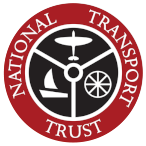Early Days
The earliest railways were waggonways built for horse-drawn chauldrons to carry mineral traffic (stone, coal) generally to the nearest port or canal wharf. Railways allowed higher loads to be hauled on more-or-less level stretches, while static steam engines rope-hauled the waggons up inclines. Notable waggonway examples are Surrey Iron Railway and the Haytor Tramway.
In 1804 Richard Trevithick was the first to put the steam engine onto wheels and dispense with the horse. He worked at Pen-y-Darren near Merthyr Tydfil in Wales, while George Stephenson and Timothy Hackworth developed the idea in the NE coalfield.
Nineteenth Century Expansion
Stephenson's Rocket led the Rainhill Trials of 1829 which proved the viability of steam powered inter-city rail, for passengers as well as freight and minerals. A flood of development proposals followed ("Railway mania") and England was crisscrossed with railways and their associated earthworks, built with the muscle power of the navvies. Fortunes were made and lost - notably by the "Railway King", George Hudson. City station architecture competed with cathedrals while daring bridges, trestles and viaducts leapt across rivers and valleys.
Bradshaw published his first network passenger timetable in 1839. Freight movements became possible from one end of the country to the other, the Railway Clearing House setting common standards and sharing out revenue between the various companies.
Between 1839 and 1892 the 7' Broad Gauge of Isambard K. Brunel competed with, but ultimately lost out to, Stephenson's 4'8" for main lines. In remoter parts where connection to the national network was less significant, narrow gauges of 1'11" to 3' were adopted. Motive power was now universally the steam locomotive, built in Britain for home and abroad. Gradually safety measures improved with fixed lineside signals and continuous brakes on trains.
Victorian - Edwardian Heyday
Passenger comfort improved with corridor trains, on-board lavatories, dining cars and sleepers for longer journeys. Competition between railway companies led to races: London-Scotland in the shooting season and Plymouth-London connecting from transatlantic liners (the latter cumlminating in disaster at Salisbury in 1906). Other lines sought publicity with the magnificence of their liveries.
Not all was well. Network expansion came close to standstill as all the remunerative traffics had already been tapped, although the Light Railways Act of 1896 permitted lower costs for rural and local lines. In the cities, electric trams were competing strongly for short-distance and commuter traffic. Tube railways were developed in London and Glasgow. Additional halts were provided on suburban lines.
Inter-War Grouping
Following WW1 Britain's railway companies were amalgamated into the "Big Four" (GWR, LMS, LNER, SR). Although funds for investment were sparse, each developed bigger engines with more cylinders and more wheels to move heavier loads at faster speeds. Top-flight named expresses were timetabled, some with Pullman cars to attract the luxury market, and the publicity departments produced some notable posters and leaflets.
Commuting was encouraged hand-in-hand with property development of city suburbs. Electrification offered more frequent and faster services with fewer trains and staff. Some routes were transferred from the main line companies to London Underground to eliminate changing trains.
British Rail(ways)
WW2 led to labour and material shortages, and the railways were brought under state ownership. Ease of maintenance became paramount. BR controversially developed a new generation of steam locomotives but they were rapidly made obsolete by diesel and electric traction. Colour-light signals with electronic interlocking allowed abolition of old manual signal boxes, while continuously welded rail eliminated the familiar "clickety-clack" and reduced wear.
Dr. Beeching took the flak for identifying the need for a radical reshaping of Britain's railways but in truth change was already under way. Diesel multiple units introduced "conductor-guard" operation with on-board fare collection but many minor lines were closed, leaving trackbeds to be explored on foot or cycle.
To compete with airlines BR developed an experimental tilting trainset but it was the diesel-powered HST that changed the face of intercity passenger travel for a generation. "Merry-go-round" bulk mineral trains returned freight haulage to its roots. Freightliner container services to and from deep-sea shipping ports provided the longest and some of the heaviest trainloads.
Privatisation - and Preservation
In the 1990s track and trains were sold and operations franchised to private companies. After more than a century of dreams Eurostar and le Shuttle linked Britain's railways to continental Europe. In the cities the distinction between train and tram was blurred with supertrams running on reserved tracks beside roads in Sheffield and Manchester, and light rail in Tyneside and London's Docklands. The latter, along with some London tube lines, uses sophisticated communications to dispense with the need for a driver on each train.
Heritage preservation originated in Wales as commercial traffic ceased on the Talyllyn and Ffestiniog narrow gauge lines and operations were taken over by enthusiasts. The Bluebell line pioneered volunteer operation of standard gauge tourist lines. It is now quite common to find trains and other artefacts that have been in the hands of preservationists for longer than they saw active service, still operating as a reminder of how rail transport changed the face of Britain.
![]()
Would you like to read more?
Then join us - much more information is published in our Digest and Members' Area.
Click become a Member for details of Trust membership.
